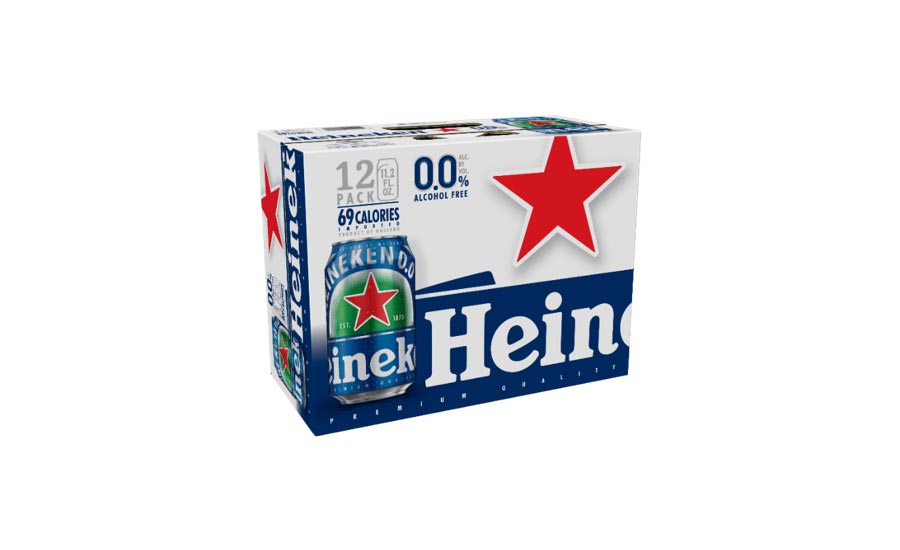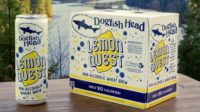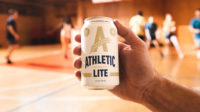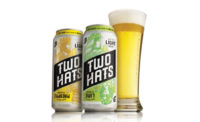Consumers desire to live a healthier lifestyle has penetrated a lot of beverage categories. Now that consumer trend is finding its footing in the U.S. beer market with the growth of non-alcohol beer. For the 52 weeks ending Dec. 27, 2020, the non-alcohol beer segment posted dollar sales of $188.2 million, a 37.7 percent increase, in total U.S. multi-outlets, according to data from Chicago-based Information Resources Inc. (IRI).
“Consumer trends around health and wellness, as well as drinkers seeking more mindful drinking occasions, are fueling the increasing popularity of non-alcoholic beer,” says Danelle Kosmal, vice president of beverage alcohol practice for Chicago-based NielsenIQ. “The large-scale launch of a few new national brands is fueling growth, but smaller non-alcoholic craft beer brands are also growing in popularity. While still small, non-alcoholic craft beer grew by 278 percent in the 52 weeks ending Oct. 24, 2020.”
Brian Sudano, managing partner for Beverage Marketing Corporation (BMC), New York, echoes similar sentiments.

“Consumer desire to drink lower and non-alcoholic adult beverages has increased over the past several years,” he says “Non-alcoholic beer plays into this healthier lifestyle. The restrictions in place against the on-premise have hurt the overall adoption and growth of the segment. With the major [brewers] including Heineken and ABI introducing non-alcoholic versions of their flagship brands, availability and trial is likely to continue to build.”
In 2020, Budweiser, a brand of St. Louis-based Anheuser-Busch, unveiled its first zero alcohol brew: Budweiser Zero. Developed and co-founded in partnership with NBA legend, entrepreneur and advocate Dwyane Wade, this zero-sugar, 50 calorie beverage has the same taste profile as Budweiser, but with zero percent ABV.
Leveraging his ties to the sports world, Wade helped create Budweiser Zero with the athlete in mind: someone who wants the great taste of a Budweiser without the after-effects of alcohol, particularly while training or in season, the company says. Wade also is appearing in advertising for the brand extension.
“Budweiser has been a great partner of mine over the past two years and this was a natural next step,” Wade said in a statement. “I’m really excited to join Budweiser in bringing their first alcohol-free beer to life. With sports making a return, this is timely as Bud Zero is a game changer by letting athletes enjoy the taste of a refreshing beer without impacting their mental and physical game.”
Throughout January, Wade and a group of coaches and athletes from the United States, United Kingdom and Canada comprised Team Zero. The professionals rallied together to keep each other motivated and encourage consumers along their Dry January journey, the company says.

White Plains, N.Y.-based HEINEKEN USA, actually entered the non-alcohol beer space in 2019 with its launch of Heineken 0.0. Since then, the brand has developed packaging to support consumer trial as well as multi-packs to support different drinking occasions, including a 12-pack of cans during Dry January in select markets, with a national launch slated for this month.
“We’re picking up on the continuing trend of adults abstaining or reducing alcohol consumption, which we see as an opportunity to boost business during one of the traditionally slower months of the year,” says Chuck Boddy, senior brand manager at HEINEKEN USA, in a statement.
As brewers take bigger steps into the alcohol-free beer space, analysts highlight that the U.S. market has more opportunities for growth, although some challenges will need to be navigated to support that potential growth.
“The U.S. non-alcoholic beer market is significantly under-developed when compared to Europe in which it sits around 5 percent of total market and is some countries exceeds 10 percent of the beer market,” BMC’s Sudano says. “A few headwinds exist in the U.S. for the segment to breakthrough. This includes a culture that has not adopted non-alcoholic beer broadly and demographics [that] differ significantly between U.S. and Europe, e.g., the U.S. has a much smaller Muslim population in which many do not participate in the consumption of alcohol on religious grounds.”
Although the non-alcohol beer market is not as mature as other beer segments, it still can further its potential by appealing to younger adults.
“Younger consumers have broadly reduced their consumption of alcohol with more abstaining versus prior younger demographics,” Sudano says. “This overall presents a tailwind. However, adoption of non-alcoholic beer in the U.S. has been declining in recent decades. This creates more of a headwind going forward.”






